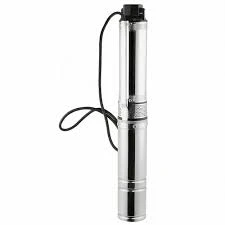Dec . 07, 2024 13:36 Back to list
High-Efficiency Submersible Water Pumps for Deep Bore Well Applications
Exploring the Deep Bore Well Submersible Water Pump
In the realm of modern water management, deep bore well submersible water pumps have emerged as a vital tool for efficiently accessing groundwater. These mechanical devices not only improve water supply for agricultural, industrial, and domestic purposes but also play a crucial role in managing water resources sustainably. This article delves into the functionality, advantages, and applications of deep bore well submersible water pumps.
Understanding Deep Bore Well Submersible Pumps
A deep bore well submersible pump is designed to pump water from deep underground sources. Unlike surface pumps, which draw water only from shallow depths, submersible pumps are placed directly in the water. The key components of these pumps include a motor, impeller, and a series of stages to increase water pressure. The motor is hermetically sealed and submerged in the water, which helps in cooling and lubricating it, enhancing the pump's efficiency and longevity.
Deep bore wells are typically drilled to reach aquifers that are often hundreds of feet below the surface. These wells allow access to water sources that are otherwise inaccessible through conventional pumping methods, making submersible pumps particularly valuable in areas with limited or diminishing surface water.
Advantages of Submersible Pumps
1. Efficiency Submersible pumps are designed to be efficient and can handle a larger volume of water with less energy. Their ability to operate underwater reduces the need for complex mechanical systems, minimizing energy loss and operational costs.
2. Durability Constructed from robust materials such as stainless steel and thermoplastics, submersible pumps are built to withstand harsh conditions. Their design minimizes wear and tear, allowing them to operate effectively for many years.
3. Space-saving Design Since they are installed underground, submersible pumps occupy minimal surface space. This feature is especially beneficial in urban settings or areas where the horizontal footprint is limited.
deep bore well submersible water pump

4. Lower Noise Levels Operating underwater, these pumps generate less noise compared to traditional pumps, making them suitable for residential areas. This is particularly important for community relations and environmental considerations.
Applications of Deep Bore Well Submersible Pumps
1. Agriculture In agrarian economies, submersible pumps are extensively used for irrigation purposes. They allow farmers to efficiently draw water from deep wells, ensuring crops receive adequate hydration, especially in arid regions.
2. Municipal Water Supply Many municipalities rely on submersible pumps to supply potable water to residents. These pumps help in accessing freshwater aquifers, thereby ensuring a steady supply of clean drinking water.
3. Industrial Use Industries requiring significant water resources, such as manufacturing and power generation, often depend on deep bore well submersible pumps. They can efficiently manage large volumes of water demand, supporting production processes.
4. Groundwater Management In areas facing water scarcity, submersible pumps can be instrumental in managing groundwater resources. They facilitate the extraction of water while minimizing the impact on surrounding ecosystems.
Conclusion
Deep bore well submersible water pumps are an essential component in the modern approach to water resource management. Their efficiency, durability, and versatility make them an attractive solution for a range of applications—from agriculture to municipal water supply. As the global population continues to grow and water scarcity becomes an increasingly pressing issue, the role of these pumps will undoubtedly become more critical. Investing in advanced submersible pump technology not only enhances water availability but also promotes sustainable water use in a rapidly changing world. As we look to the future, the importance of managing our groundwater resources responsibly cannot be overstated, and deep bore well submersible pumps stand at the forefront of this essential endeavor.
-
Submersible Water Pump: The Efficient 'Power Pioneer' of the Underwater World
NewsJul.01,2025
-
Submersible Pond Pump: The Hidden Guardian of Water Landscape Ecology
NewsJul.01,2025
-
Stainless Well Pump: A Reliable and Durable Pumping Main Force
NewsJul.01,2025
-
Stainless Steel Submersible Pump: An Efficient and Versatile Tool for Underwater Operations
NewsJul.01,2025
-
Deep Well Submersible Pump: An Efficient 'Sucker' of Groundwater Sources
NewsJul.01,2025
-
Deep Water Well Pump: An Efficient 'Sucker' of Groundwater Sources
NewsJul.01,2025
-
 Submersible Water Pump: The Efficient 'Power Pioneer' of the Underwater WorldIn the field of hydraulic equipment, the Submersible Water Pump has become the core equipment for underwater operations and water resource transportation due to its unique design and excellent performance.Detail
Submersible Water Pump: The Efficient 'Power Pioneer' of the Underwater WorldIn the field of hydraulic equipment, the Submersible Water Pump has become the core equipment for underwater operations and water resource transportation due to its unique design and excellent performance.Detail -
 Submersible Pond Pump: The Hidden Guardian of Water Landscape EcologyIn courtyard landscapes, ecological ponds, and even small-scale water conservancy projects, there is a silent yet indispensable equipment - the Submersible Pond Pump.Detail
Submersible Pond Pump: The Hidden Guardian of Water Landscape EcologyIn courtyard landscapes, ecological ponds, and even small-scale water conservancy projects, there is a silent yet indispensable equipment - the Submersible Pond Pump.Detail -
 Stainless Well Pump: A Reliable and Durable Pumping Main ForceIn the field of water resource transportation, Stainless Well Pump has become the core equipment for various pumping scenarios with its excellent performance and reliable quality.Detail
Stainless Well Pump: A Reliable and Durable Pumping Main ForceIn the field of water resource transportation, Stainless Well Pump has become the core equipment for various pumping scenarios with its excellent performance and reliable quality.Detail
